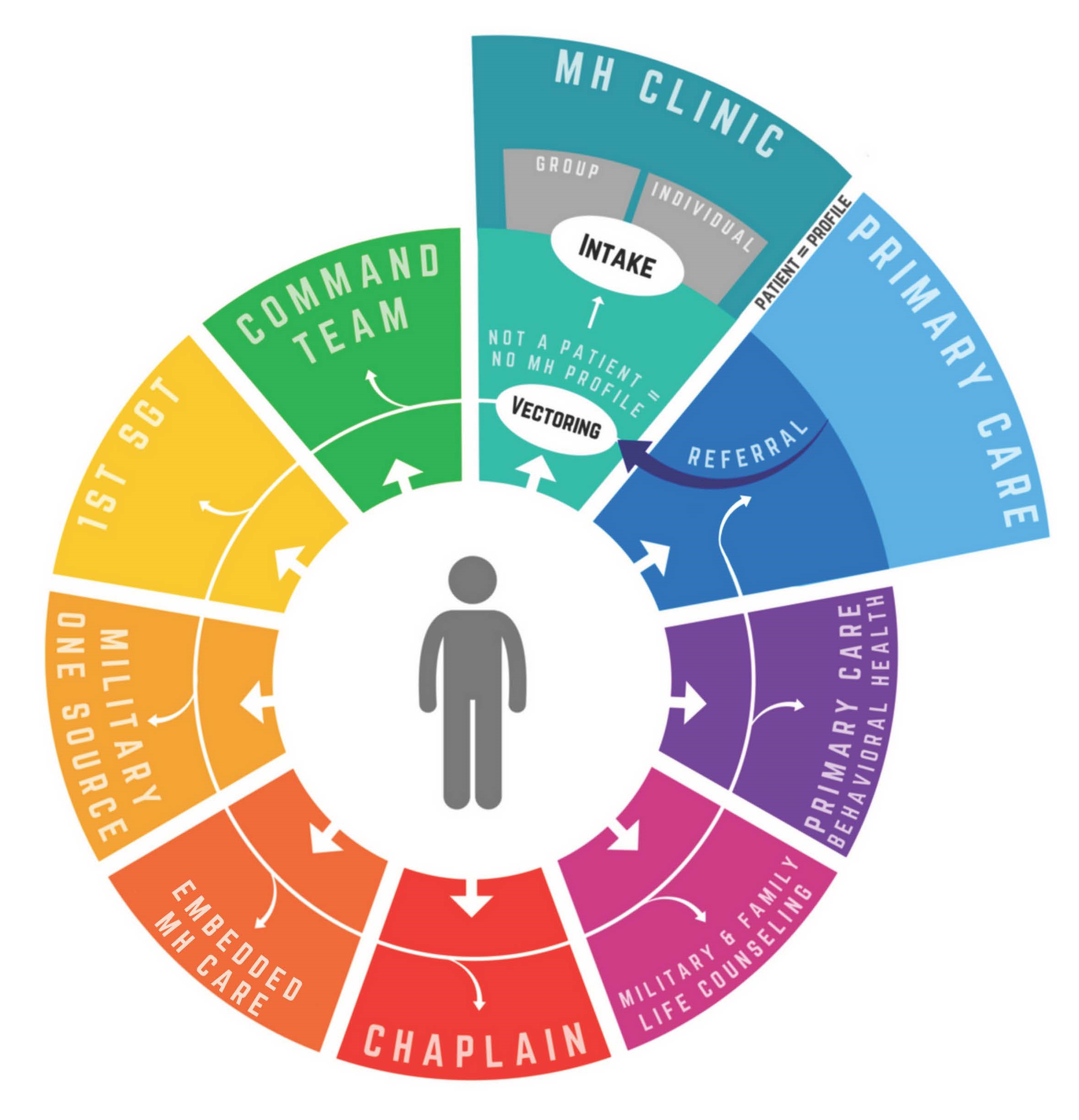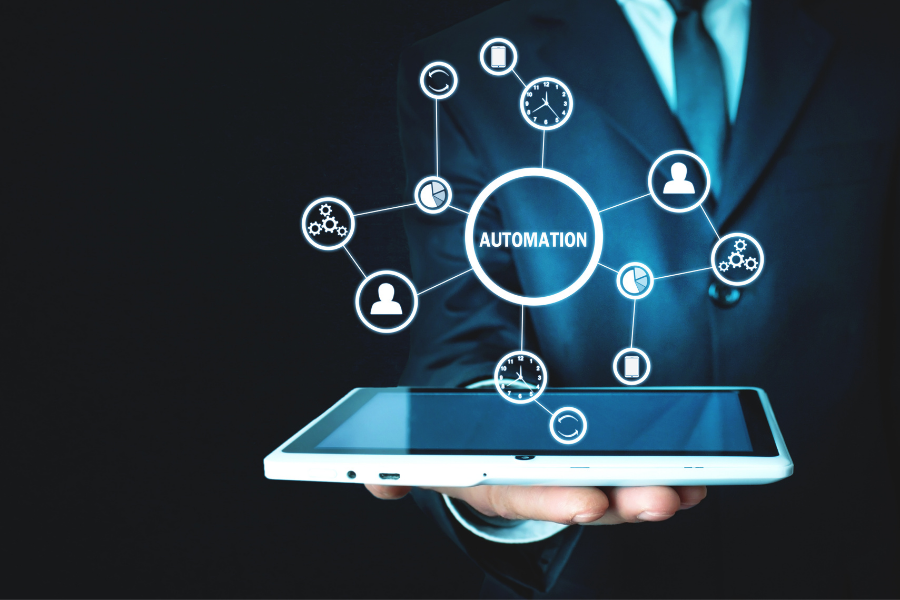Resilience in business isn't just a trendy term—it's a must-have. Studies show that companies with resilient teams are 60% more likely to get through tough economic times. Looking ahead to 2025, it's clear that strong HR strategies to build resilience are more important than ever. But how do you create a team that can handle anything? In this article, we'll explore key HR strategies to make your team adaptable and strong. From fresh recruitment methods to encouraging ongoing learning, we'll walk you through how to prepare your organization for the future. Let's tackle the path to resilience together, ensuring your team not only survives but thrives when challenges arise!
Step-by-Step HR Strategies for Building a Resilient Workforce in 2025
Prioritize Mental Health Support
Provide Therapy and Mental Health App Access
In today's fast-paced work environment, mental health support is crucial for maintaining employee well-being. A practical approach is to provide free access to therapy or mental health apps. These tools empower employees to seek help tailored to their unique needs. Look for apps offering a variety of services, such as cognitive behavioral therapy, meditation, and self-assessment. Ensure these apps are user-friendly and compatible with multiple devices to maximize accessibility.

To implement this, companies should consider partnering with reputable mental health providers. Securing group rates for app subscriptions or therapy sessions can facilitate employee access to these resources. It's essential to communicate these offerings through newsletters, emails, and team chats. Managers should actively promote these options, highlighting their benefits and ensuring employees know how to utilize them. More information is available here.
Promote Mental Health Days for Employees
Promoting mental health days can significantly enhance workplace resilience. Begin by revising policies to incorporate mental health days into regular sick leave. Educate employees on the importance of taking time off for mental health, equating it with physical health needs. Managers should lead by example, openly discussing mental health and taking mental health days themselves, which helps reduce stigma. Encourage employees to use these days freely, reinforcing that their mental well-being is a priority and the company fully supports them. For more details, visit this source.
Train Managers to Identify Stress Indicators
Managers play a pivotal role in identifying and addressing stress within their teams. Train them to recognize early signs of stress, such as behavioral changes, decreased productivity, or increased absences. Equip managers with the tools and techniques for conducting sensitive conversations about mental health. Providing access to HR specialists or mental health professionals can offer additional support. Regular check-ins with team members foster open communication and trust. This proactive approach addresses issues before they escalate, promoting a healthier work environment. More insights can be found here.
Create a Psychologically Safe Environment
Encourage Open Communication and Feedback
Psychological safety is the cornerstone of a robust workforce. It's about ensuring employees can express their thoughts and concerns without fear. Establish clear communication channels, such as anonymous feedback systems or regular town hall meetings. Train leaders in active listening and empathy to nurture this environment. Acknowledge employee contributions and promptly address concerns. By promoting respect and inclusivity, where diverse voices are valued, employees are encouraged to speak up, leading to increased innovation and problem-solving. Additional information can be found here.
Promote Teamwork and Innovation
A safe environment naturally fosters collaboration and risk-taking. Cultivate a culture where employees feel comfortable experimenting and learning from mistakes. Team-building activities that build trust can be beneficial. Cross-departmental projects enhance collaboration and knowledge sharing. Recognizing and rewarding innovative ideas and calculated risks encourages a culture of creativity and growth, strengthening the workforce. More details are available here.
Implement Flexibility in Work Models
Embrace Hybrid and Flexible Work Schedules
Flexibility in work models is vital for accommodating a diverse workforce. Consider hybrid schedules, condensed workweeks, or remote work options. Begin by assessing which roles are compatible with these models. Engage with employees to understand their preferences and challenges, using this feedback to shape flexible work policies that align with both business goals and employee needs. Establish clear communication and performance expectations in a flexible work environment. Provide necessary tools and technology for remote or hybrid work, such as collaboration software and secure access to resources. Regularly evaluate these models to ensure they are effective and satisfying for employees. For more information, visit this source.
Tailor Work Policies to Employee Needs
To truly embrace flexibility, tailor work policies to meet employee preferences. Surveys or focus groups can reveal what employees value most in their work setups. Use this data to inform policy decisions and create a personalized work experience. Offer options like flexible start and end times, working from different locations, or part-time arrangements to enhance work-life balance. Clear communication of these options and equipping managers to support their teams in flexible work arrangements are vital. This boosts engagement and retention, improving overall satisfaction. Further details can be found here.
Upskill and Reskill Employees
Prioritize Learning and Development Investments
Investing in learning and development is crucial for building a resilient workforce. Allocate resources for comprehensive training programs that address current and future skill needs. Use skills assessments and performance reviews to guide these efforts. Encourage a culture of continuous learning by providing access to courses, workshops, and certifications. Offer incentives like tuition reimbursement or bonuses for completing training programs. Make learning opportunities relevant to employees' roles and career goals for success. More insights are available here.
Leverage AI for Personalized Training
Leveraging technology to enhance learning and development can benefit organizations. AI-driven learning platforms offer personalized paths based on skill gaps and career goals. These platforms provide tailored content, such as videos and interactive modules. Integrating training into daily workflows allows employees to learn at their own pace. Encourage collaboration and knowledge sharing through online forums or study groups. Regular updates to training content reflecting industry trends ensure employees remain competitive and adaptable. Additional information can be found here.
Conduct Continuous Monitoring and Improvement
Evaluate HR Program Effectiveness Regularly
Continuous monitoring and improvement are crucial for HR strategies. Regularly evaluating program impacts ensures they meet organizational and employee needs. Develop key performance indicators (KPIs) like employee satisfaction, retention rates, or productivity levels. Regular reviews of HR initiatives and employee feedback provide valuable insights. Use this data to identify improvement areas and make necessary adjustments. This iterative approach keeps programs relevant and effective, supporting a resilient workforce. More details are available here.
Gather Insights with Surveys and Data Analysis
Gathering insights through surveys, focus groups, and HR data analysis is crucial for informed decisions. Design surveys to capture employee feedback on job satisfaction, work-life balance, and career development. Conduct focus groups for in-depth exploration of specific issues. Analyze HR data to identify trends like turnover rates or absenteeism to inform strategic planning. Regularly share findings and actions taken in response to feedback to build trust and engagement, showing commitment to continuous improvement. Further information can be found here.
Foster Employee Engagement and Experience
Conduct Stay Interviews for Employee Feedback
Stay interviews are a proactive way to understand employee concerns and boost engagement. Conduct one-on-one interviews to discuss experiences, challenges, and aspirations. Use open-ended questions for honest feedback. Document insights and identify common themes or improvement areas. Develop action plans to address concerns and enhance work experience. Regular follow-ups ensure changes are implemented and show commitment to their satisfaction and growth. More details can be found here.
Enhance Work-Life Balance and Career Growth
Supporting work-life balance and development opportunities is key for engagement. Offer flexible work arrangements, wellness programs, and resources for a healthy work-life balance. Encourage breaks, vacation time, and self-care. Provide career development opportunities like mentorship, leadership training, or cross-training initiatives. Recognize and celebrate achievements to reinforce employee value. This holistic approach boosts satisfaction and loyalty, strengthening the workforce. Further information is available here.
Integrate AI and Digital Readiness Training
Train Employees for AI and Automation Adaptation
As AI and automation transform workplaces, preparing employees is crucial. Develop training programs focusing on digital readiness and skills for working with AI. Start by assessing current skills and identifying gaps. Offer workshops, webinars, and hands-on training on AI tools and applications. Encourage curiosity and adaptability, highlighting AI's productivity and innovation benefits. Provide resources for exploring AI-related topics and projects to enhance readiness. More details can be found here.
Facilitate AI Learning and Inquiry Spaces
Create an environment where employees feel comfortable learning about AI and asking questions. Organize sessions covering AI concepts, use cases, and ethics. Invite experts to share insights and facilitate discussions. Set up safe spaces like forums or Q&A sessions for voicing concerns or seeking clarification. Encourage peer-to-peer learning and collaboration to build a community around AI and digital tech. This approach builds confidence and competence, enabling employees to thrive in a tech-driven workplace. More information is available here.
Offer Comprehensive Well-being Initiatives
Focus on Holistic Health Programs
Comprehensive well-being initiatives cover mental, physical, and financial health. Develop programs for holistic well-being, like fitness challenges, nutrition workshops, and financial planning seminars. Provide resources like employee assistance programs, wellness apps, and financial counseling to boost well-being. Encourage a culture of well-being by integrating wellness activities into routines and offering participation incentives. Regularly assess effectiveness through feedback and data analysis to meet evolving needs. This commitment enhances resilience and satisfaction. More insights can be found here.
Develop Inclusive Well-being Programs
Design and implement well-being programs catering to diverse needs. Collaborate with experts to develop initiatives addressing specific health concerns or lifestyle goals. Offer various programs like yoga, mindfulness, or smoking cessation support. Ensure programs are inclusive and accessible to all employees, regardless of location or schedule. Communicate availability and benefits through multiple channels like emails, posters, or internal social media. Track participation and outcomes to evaluate impact. Use this data to celebrate successes, identify improvement areas, and show commitment to health and happiness. Further details are available here.
Understanding the Importance of a Resilient Workforce
A resilient workforce is key for tackling the fast-changing business world. Resilient employees adapt to change, overcome challenges, and stay productive. They foster a positive work environment and drive success. To build resilience, prioritize well-being, engagement, and development. Create supportive environments, offer flexible work, and invest in continuous learning. This boosts satisfaction, reduces turnover, and ensures long-term success. More information can be found here.
Leveraging Technology and Innovation
Technology and innovation drive resilience in today's workplace. Digital tools and platforms streamline processes, enhance communication, and improve decision-making. Technology helps employees work more efficiently, strengthening the workforce. Invest in digital infrastructure and upskill employees to harness technology. Provide training on new tools and encourage a culture of innovation. Embrace technology to stay competitive and agile in a fast-paced market. Further details are available here.
Enhancing Employee Engagement and Well-being
Employee engagement and well-being are crucial for workforce resilience. Engaged employees are motivated, productive, and committed. They contribute to a positive culture and drive business success. Enhance engagement and well-being by listening to feedback, offering development opportunities, and supporting work-life balance. Create supportive environments, recognize achievements, and provide growth resources. Prioritizing engagement and well-being builds a resilient and thriving workforce. More insights can be found here.
Continuous Learning and Development
Continuous learning and development are vital for resilience. In a fast-changing business world, employees must update skills to stay competitive. Investing in learning creates a culture of growth and innovation. Offer training programs, workshops, and resources. Use technology for personalized learning and encourage new skills and certifications. Fostering a learning culture enhances resilience and drives success. Further information is available here.
Strategic Workforce Planning
Strategic workforce planning is essential for resilience. Anticipate future skill needs, identify talent gaps, and develop strategies to address them. Align planning with business goals to ensure the right talent for success. Conduct regular workforce assessments and identify trends and challenges. Analyze data, engage employees, and collaborate with stakeholders. A proactive approach builds resilience and keeps organizations competitive. More details can be found here.
Leadership and Culture in Building Resilience
Leadership and culture are crucial for resilience. Effective leaders inspire and motivate, fostering trust, collaboration, and innovation. They create environments where employees feel valued and supported. Develop leaders who embody these qualities and promote a positive culture. Provide leadership training, encourage open communication, and recognize contributions. Strong leadership and supportive culture enhance resilience and drive success. More insights can be found here.
Case Studies of Successful Implementation
Case studies offer valuable insights into building resilience. Real-world examples show how others have succeeded and provide best practices. Successful cases highlight engagement, well-being, and development's importance. They show how innovative HR strategies, technology, and positive culture enhance resilience. Learning from these examples offers inspiration and guidance for building a thriving workforce. Further information is available here.
Measuring Success and ROI
Measuring success and ROI is crucial for evaluating HR strategies. Track metrics like satisfaction, retention, and productivity. Analyze data to assess impacts and identify improvements. Set clear goals and KPIs for HR strategies. Collect feedback, conduct reviews, and use data analysis to inform decisions. Measuring success and ROI shows HR initiatives' value and drives continuous improvement. More details are available here.
FAQ
Integrating AI into HR Strategies Effectively
To weave AI into HR strategies, begin by employing AI tools for routine tasks like data entry and payroll. This allows HR professionals to concentrate on more strategic tasks, enhancing overall efficiency. AI also plays a crucial role in recruitment and talent management. By utilizing predictive analytics, AI can identify top candidates and predict employee turnover, as explained by Gartner.

AI chatbots are another valuable tool. They enhance employee engagement by swiftly addressing common HR inquiries, according to Forbes. However, maintaining transparency and ethics in AI decisions is essential to uphold trust and fairness in HR, as highlighted by Harvard Business Review.
Best Practices for Cultivating Workplace Resilience
Building resilience starts with open communication and encouraging feedback, which makes employees feel valued, as noted by Gallup. Providing training and resources for mental health and well-being is crucial, according to the World Health Organization.
Creating a sense of community through team activities and social events can strengthen workplace bonds, as suggested by Fast Company. Additionally, leaders should demonstrate resilience and flexibility in their actions, as Forbes highlights.
Balancing Empathy and Innovation in HR Strategies
Balancing empathy and innovation begins with active listening and understanding employee needs, as recommended by Harvard Business Review. Encourage innovation by allowing employees to pitch new ideas, as suggested by Inc..
Flexible work policies that support work-life balance are vital, according to SHRM. While using data-driven insights for HR decisions, it's important to maintain a human touch. This approach ensures that innovation contributes positively to employee well-being, as described by Gartner.
